
How to Make Homemade Ciabatta Bread

This Homemade Ciabatta Bread recipe is all you will need to make classic Italian ciabatta bread with a spongy texture and strong yeasty flavor. Created in response to the popularity of the baguette, ciabatta is a long loaf of bread that is slightly flattened. Its spongy texture and fermented taste make it an enjoyable bread to eat for sandwiches or for a snack with some butter.
To begin making this ciabatta bread, you begin by mixing water with the yeast and sugar. Then, the flour and salt get mixed in to create a smooth dough. Next, the dough goes through a few successions of resting and folding before it is finally allowed to rest until doubled in size. After that, the dough gets divided into two loaves before being allowed to rest before being baked. The multiple periods of rest time for the dough helps develop the texture and flavor of the bread.
What is Ciabatta Bread?
Ciabatta bread is a type of Italian bread that originated in quite recent history in 1982. A baker named Arnaldo Cavallari decided to create the bread in response to the rising popularity of the baguette. Similar to baguette, ciabatta is made with white flour and has a crusty exterior and fluffy interior. It has a wonderful spongy texture that pairs wonderfully with butter or olive oil when serving.
Pro Tips
- This ciabatta bread starts with a wet dough. Make sure you mix it well enough so that the flour is fully incorporated with the other ingredients.
- Make sure your yeast is fresh before you start making your dough. Yeast that has been stored for a long time should be tested first so you know it will help raise the dough. To do so, place a small amount in a cup of lukewarm water to see if it foams. If it becomes foamy, you will know the yeast is still alive.
- If you prefer a whole wheat bread, you could replace part of the white flour with whole wheat flour.
- If your dough doesn’t seem to be rising, move it to a warmer place in your home so it rises more quickly.
- You will be able to tell that the ciabatta is baked through when it is golden on the top and bottom. You can also test the internal temperature with a thermometer, which should be 190 F to 200 F (87.7 C to 93.3 C).
What to Serve with Ciabatta Bread?
The possibilities are endless when it comes to ciabatta bread. It is wonderful spread with butter or dipped in olive oil and balsamic vinegar, but if you would like to make it a little more special, you could also turn it into sandwiches with cold cuts, cheese, and arugula. Ciabatta also makes good crostini with an array of toppings.
What is Ciabatta Bread?
Ciabatta bread is a type of Italian bread that is flat, long, and oval in shape. The word “ciabatta” means “carpet slipper,” which is fitting due to its appearance.
Ciabatta is a glutinous white bread that originated in Italy in the 1980s but has quickly gained prominence due to its custardy crumb and crusty exterior. While it originated in the Veneto region of Italy, it is enjoyed all over the world today.
How Can I Make Ciabatta Rolls?
If you would like to turn your ciabatta bread into rolls instead, you can divide the dough into smaller roll-sized portions rather than dividing it into two loaves. Ciabatta rolls will likely require less time to bake.
What Type of Flour Should Be Used for Ciabatta?
This ciabatta bread uses all-purpose flour, however, you can feel free to use bread flour instead if you have some to use up. All-purpose flour and bread flour are generally quite interchangeable.
How to Store Ciabatta Bread
Ciabatta bread doesn’t stay fresh for very long and should be consumed within a few days of making it for optimal freshness.
Can You Freeze Ciabatta Bread?
You can store it in the freezer if you would like to keep it for longer. If you find that the ciabatta bread is becoming hard after a few days, you can slice it and toast it for crostini to give it new life.
Ingredients
How to Make Ciabatta Bread
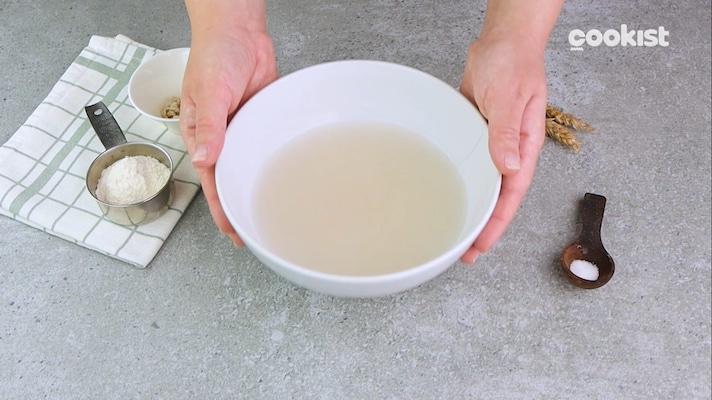
In a small bowl, stir the sugar and yeast with the water until dissolved.
In a small bowl, stir the sugar and yeast with the water until dissolved.
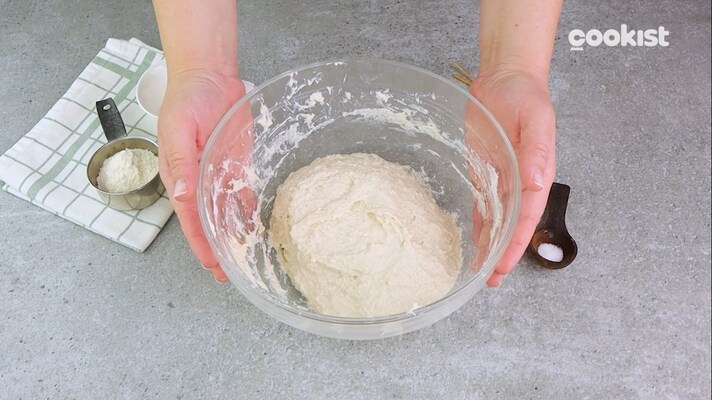
In a large bowl, stir the flour with the yeast mixture. Stir in the salt until combined.
In a large bowl, stir the flour with the yeast mixture. Stir in the salt until combined.
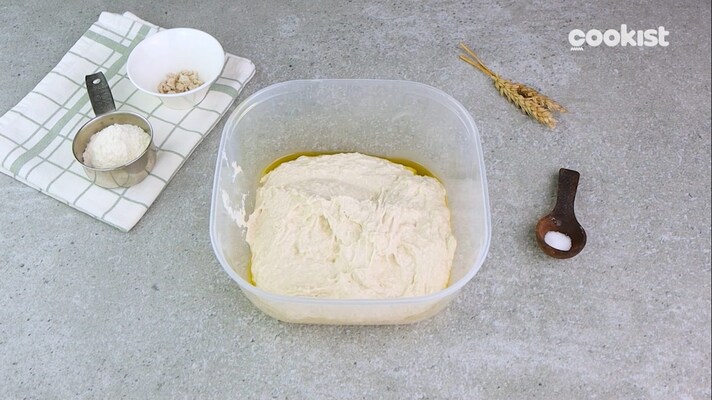
Place the dough in a container greased with the olive oil and allow it to rest for 30 minutes.
Place the dough in a container greased with the olive oil and allow it to rest for 30 minutes.
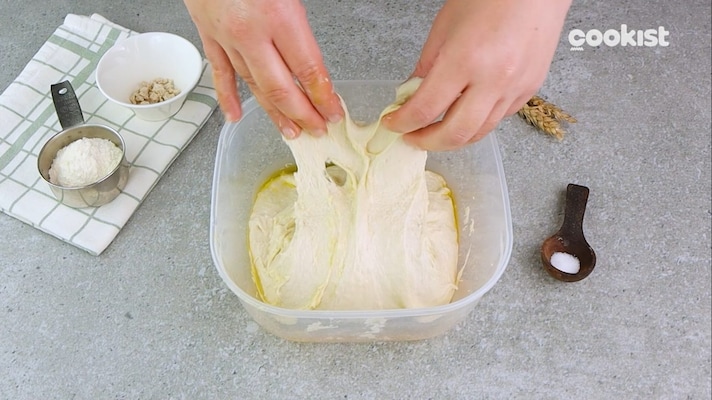
Fold the dough, cover it, and allow it to rest for 30 more minutes. Repeat this step two more times. Finally, cover it and let it rise until doubled in size.
Fold the dough, cover it, and allow it to rest for 30 more minutes. Repeat this step two more times. Finally, cover it and let it rise until doubled in size.
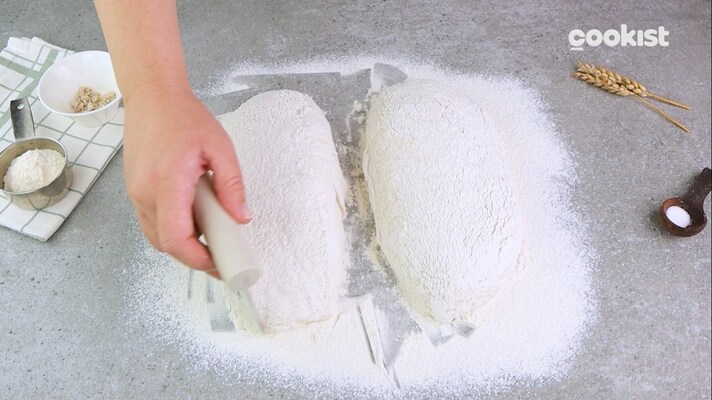
Dust the dough with flour and divide it into two loaves. Allow them to rest for 15 minutes.
Dust the dough with flour and divide it into two loaves. Allow them to rest for 15 minutes.
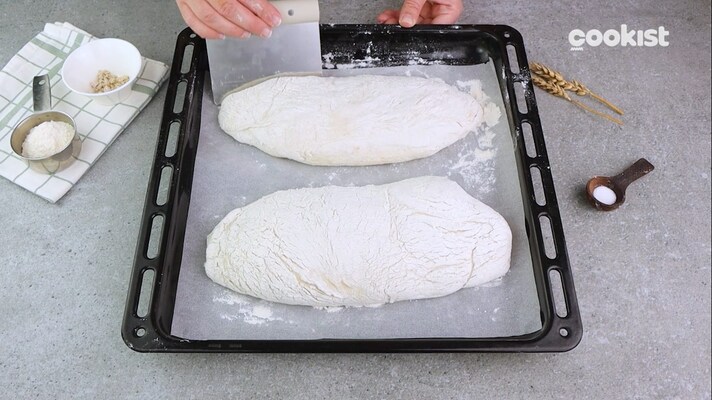
Bake the ciabatta in a 250 C/482 F oven for 10 minutes. Then, bake in a 220 C/428 F oven for 20 to 25 minutes.
Bake the ciabatta in a 250 C/482 F oven for 10 minutes. Then, bake in a 220 C/428 F oven for 20 to 25 minutes.
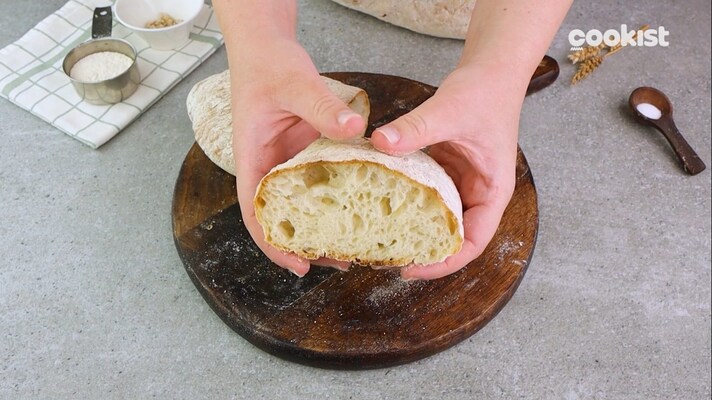
Allow the bread to cool before slicing and serving.
Allow the bread to cool before slicing and serving.
;Resize,width=767;)



